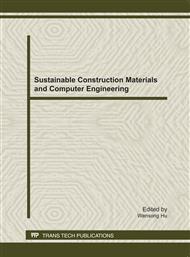p.398
p.405
p.412
p.419
p.426
p.433
p.440
p.447
p.455
Parametric Optimization for a Tapered Deployable Mast in an Integrated Design Environment
Abstract:
Deployable mast has a wide range of applications in aerospace industry. As lower weight of deployable mast can greatly save the cost of launching and higher stiffness can improve the loading capacity. This paper aims at designing a tapered deployable truss with lower weight and higher stiffness. The conceptual design and mobility analysis of tapered deployable module are first introduced. Then finite element model is then presented. The proposed structure is optimized towards the goal of maximizing the fundamental frequency and minimizing the structural weight to enhance its stiffness. In the integrated design environment of iSIGHT, Non-dominated Sorting Genetic Algorithm (NSGA-II) is chosen as the optimum tool for this dual objectives optimization issue with four constraints. The Pareto optimal solutions of this optimum problem are found after optimization. Simulation shows that the optimum value of design variables have the capability of enhancing the fundamental frequency by 17% and reducing structure weight by 8%.
Info:
Periodical:
Pages:
426-432
Citation:
Online since:
September 2011
Authors:
Keywords:
Price:
Сopyright:
© 2012 Trans Tech Publications Ltd. All Rights Reserved
Share:
Citation:


